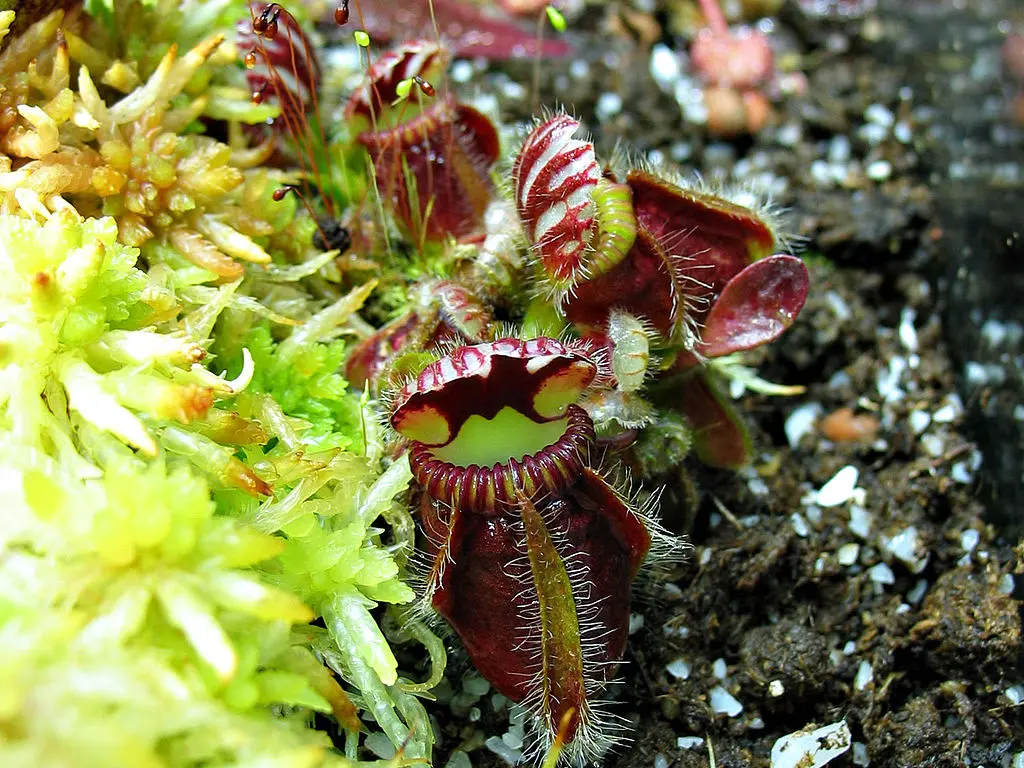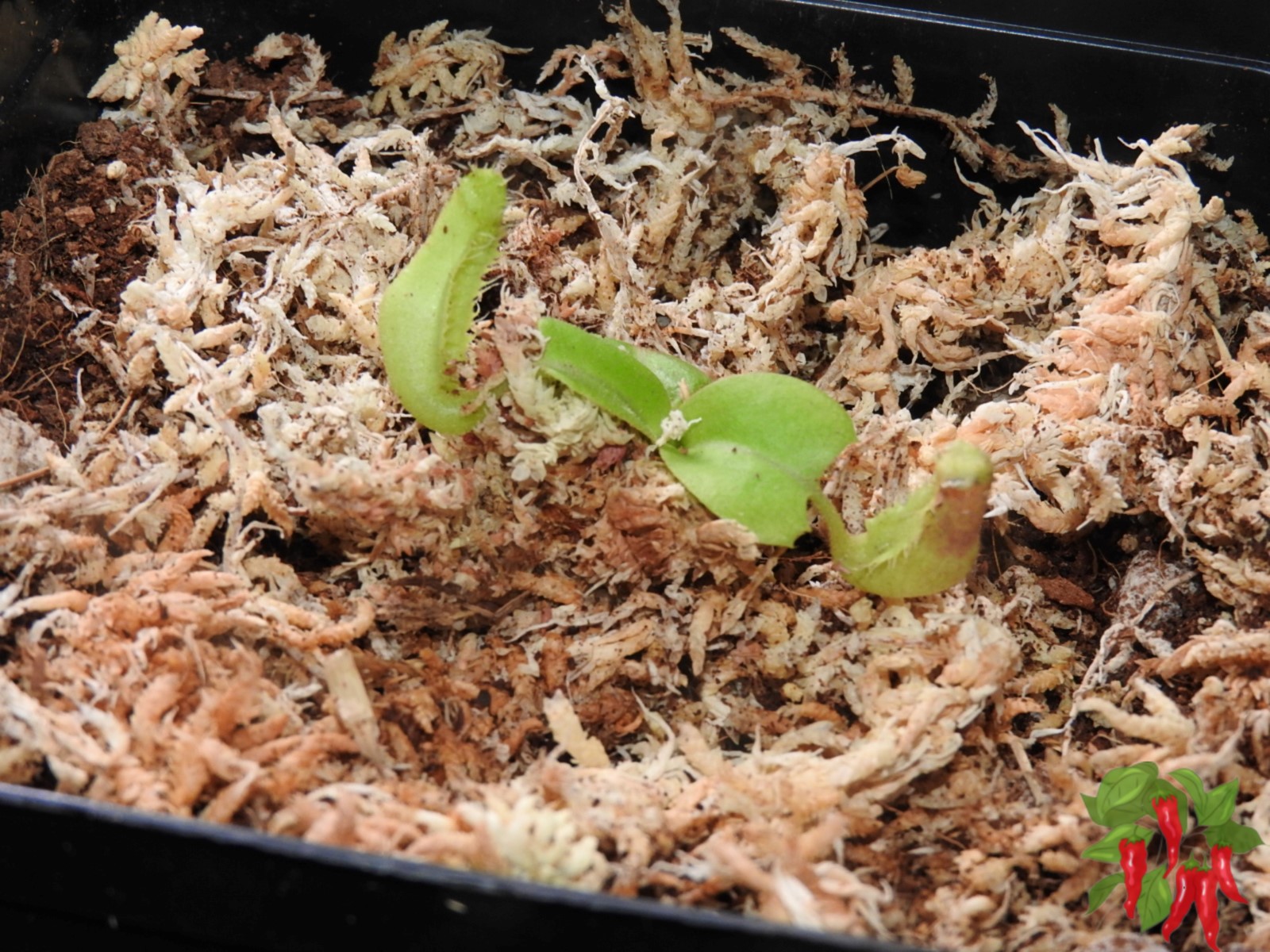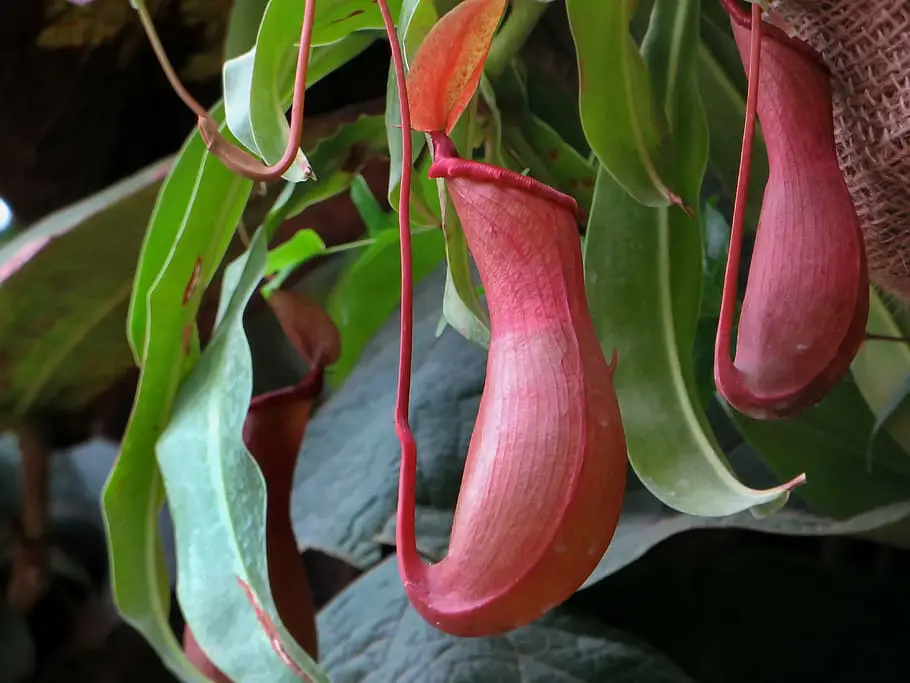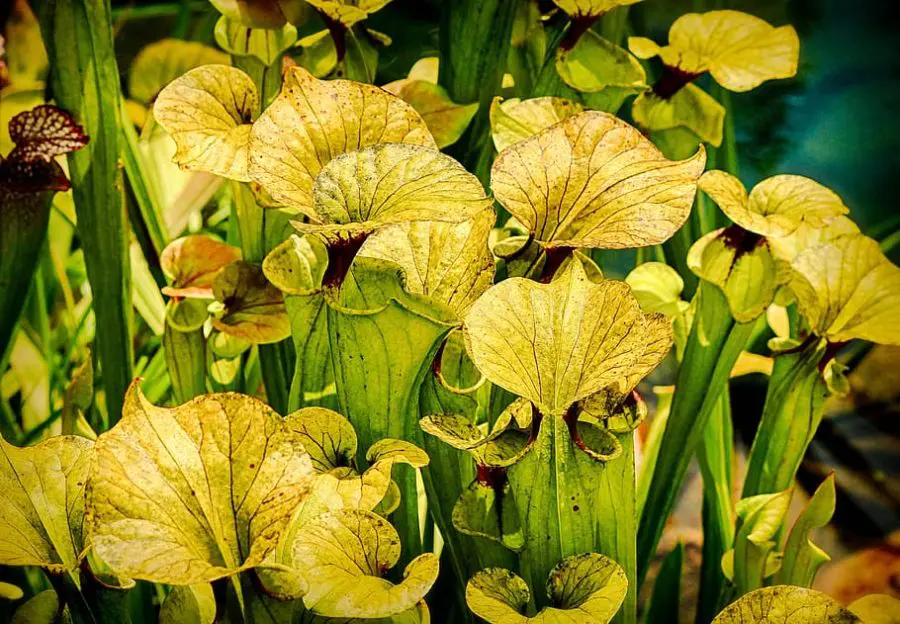This post contains affiliate links. If you buy something from one of our links we may earn a commission. Thanks
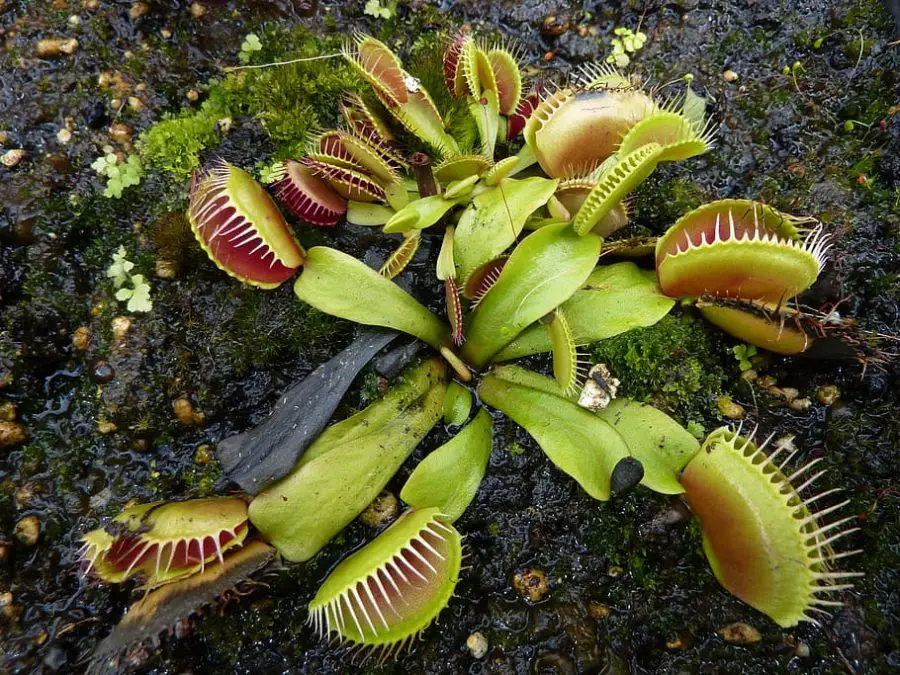
Wondering what to feed your Venus Fly Trap? Dive into our comprehensive guide to discover the do’s and don’ts of feeding this captivating carnivorous plant!
To feed your Venus Fly Trap, you can offer it insects like flies, ants, and mosquitoes. Alternative food sources include mealworms, bloodworms, and small crickets. Feed the plant once a week during its growing season, and make sure the prey is no larger than one-third the size of the trap.
What to Feed Your Venus Fly Trap
So you’ve got yourself a Venus Fly Trap, and now you’re scratching your head, wondering what to feed your Venus Fly Trap to keep it happy and healthy.
Don’t worry, you’re in the right place! Our guide will walk you through everything you need to know.
The Venus Fly Trap is a fascinating specimen that has intrigued plant enthusiasts for generations.
Unlike most plants, it has a unique diet that involves trapping and consuming live prey.
But what should you feed this captivating plant to ensure it thrives? This comprehensive guide will answer that question and more.
Find Venus Fly Traps on Amazon
Brief Overview of Venus Fly Traps and Their Unique Dietary Needs
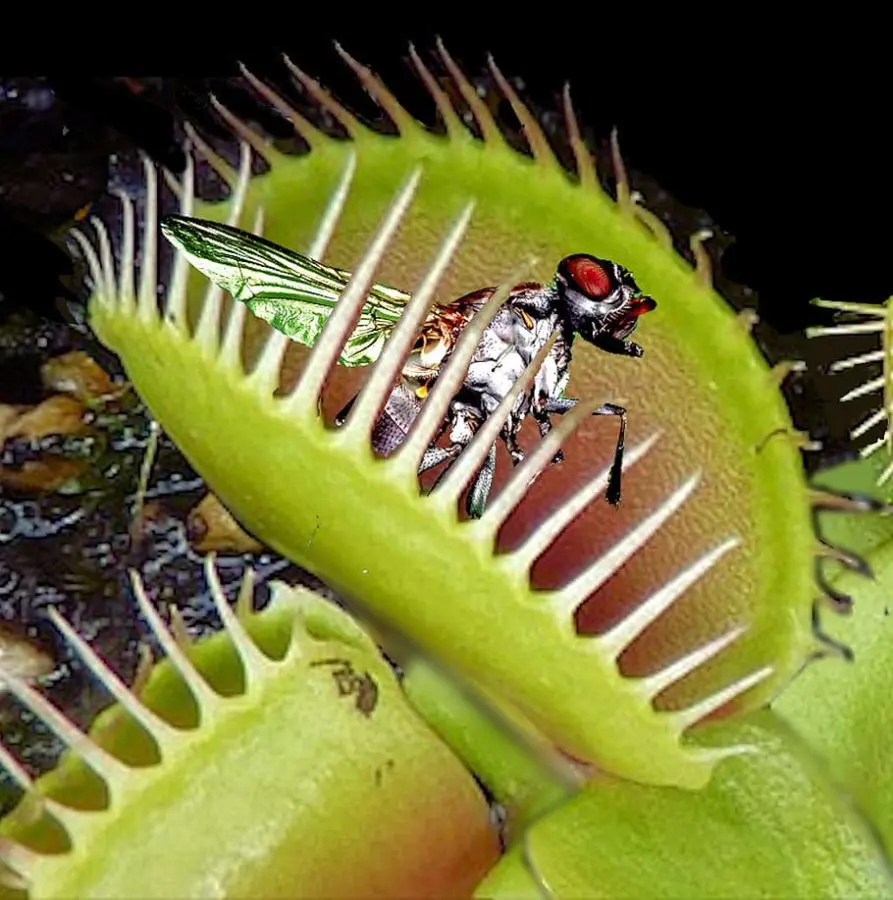
Native to the subtropical wetlands of the East Coast of the United States, this plant is a carnivorous species, meaning it derives some of its nutrients from trapping and eating animals, mainly insects and arachnids.
Unlike most plants that are content with soil, water, and sunlight, Venus Fly Traps have a more adventurous palate.
They have specialized “traps” that snap shut when triggered by prey, starting an intricate process of digestion.
Understanding this unique dietary need is crucial for anyone looking to keep a Venus Fly Trap.
Importance of Understanding What to Feed These Carnivorous Plants
You might think feeding a Venus Fly Trap is as simple as tossing in any bug that crosses your path, but it’s not that straightforward.
Feeding them the wrong type of food can lead to malnutrition, or worse, a diseased plant.
For instance, some people mistakenly believe that these plants can eat human food like meat or cheese or that they need to be fed every day.
Both of these misconceptions can lead to poor plant health.
That’s why it’s essential to know what to feed your Venus Fly Trap, how often to feed it, and what conditions it needs for optimal digestion and growth.
What the Article Will Cover
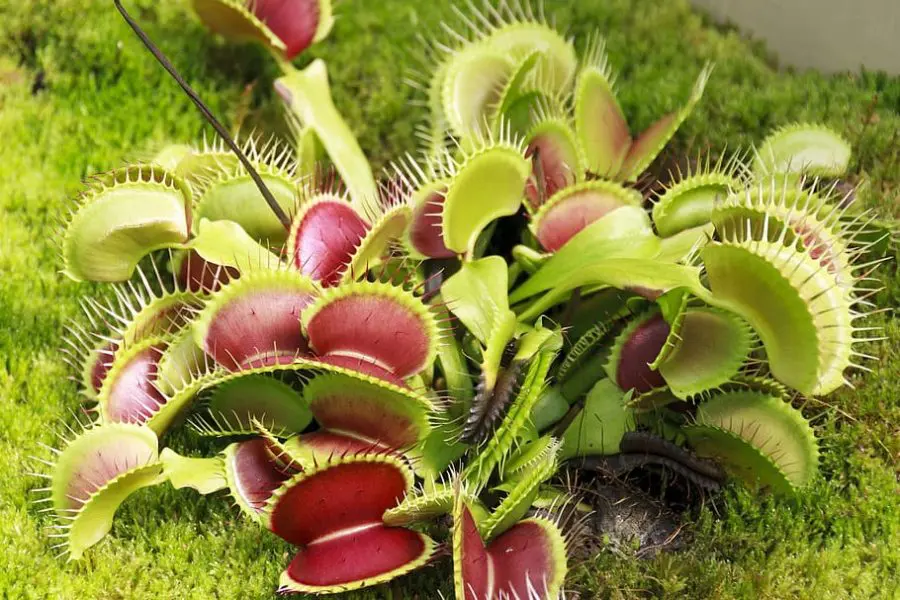
In this comprehensive guide, we’ll go beyond the basics.
We’ll explore the natural diet of the Venus Fly Trap and provide alternative feeding options for those who keep their plants indoors.
We’ll also debunk some common myths about what these plants can and cannot eat.
For those who have specific questions, we’ve included a handy FAQ section that covers the most commonly asked questions about Venus Fly Trap care and feeding.
By the end of this article, you’ll be a Venus Fly Trap feeding expert!
Basic Needs of a Venus Fly Trap
Before you even think about what tasty morsels to offer your Venus Fly Trap, it’s essential to understand its basic needs.
These foundational elements set the stage for a healthy, thriving plant that’s ready to snap up any prey that comes its way.
Proper Watering
Water is the lifeblood of any plant, but when it comes to Venus Fly Traps, not just any water will do.
These plants are highly sensitive to minerals commonly found in tap water.
Therefore, it’s best to use distilled water or rainwater to keep the soil consistently moist.
Overwatering can lead to root rot, while underwatering can cause the plant to dry out. Finding that perfect balance is key.
Sunlight Requirements
Sunlight is another critical factor for the health of your Venus Fly Trap.
These plants love a good sunbath and require at least 6 hours of direct sunlight each day.
If you’re keeping your plant indoors, you might want to invest in LED grow lights to supplement natural light, especially during the winter months.
Winter Dormancy
Much like some animals hibernate, Venus Fly Traps go through a period of winter dormancy.
During this time, the plant’s metabolic activities slow down, and it requires less water and food.
It’s a good idea to place the plant in a cool, dark area and reduce watering to mimic its natural winter conditions.
Soil Conditions
Last but not least, let’s talk about soil. Venus Fly Traps prefer nutrient-poor, acidic soil.
A mixture of sphagnum moss and sand is often recommended.
Avoid using regular potting soil or adding any fertilizers, as these can harm the plant.
The soil should be well-draining but maintain enough moisture to keep the plant hydrated.
Common Misconceptions About Feeding Venus Fly Traps
When it comes to feeding Venus Fly Traps, there’s a lot of misinformation floating around.
Let’s debunk some of these myths so you can provide the best care for your carnivorous friend.
Human Food
One of the most prevalent myths is that Venus Fly Traps can eat human food like meat or cheese.
This is a big no-no. These plants are not equipped to digest processed foods, and feeding them such items can lead to mold growth and poor health.
Stick to what nature intended: insects and spiders.
Fertilizers
Another common misconception is that Venus Fly Traps benefit from fertilizers.
In reality, these plants get all the nutrients they need from their prey.
Adding fertilizers to the soil can lead to nutrient imbalances and even kill the plant.
So, skip the Miracle-Gro; your Venus Fly Trap doesn’t need it.
Overfeeding
You might think that more food equals a happier plant, but that’s not the case with Venus Fly Traps.
Overfeeding can exhaust the traps and lead to poor health.
These plants are perfectly capable of catching their own food if they’re outdoors, and one insect per week is more than sufficient for indoor plants.
By understanding and avoiding these common misconceptions, you’ll be well on your way to providing optimal care for your Venus Fly Trap.
Knowledge is power, especially when it comes to plant care!
What to Feed Your Venus Fly Trap
So, you’ve got the basics down, and now you’re eager to find out what tasty treats you can offer your Venus Fly Trap.
Let’s explore the different types of food you can provide.
Natural Prey
The Venus Fly Trap’s natural diet consists mainly of insects like flies, ants, and mosquitoes.
If your plant is situated outdoors, nature will likely take its course, and your plant will catch its own food.
These insects provide essential nutrients that the plant needs to grow and flourish.
So, if you see a fly buzzing around your outdoor Venus Fly Trap, don’t shoo it away; it’s mealtime!
Alternative Food Sources
For those who keep their Venus Fly Traps indoors, catching natural prey might be a bit challenging.
But don’t worry, there are alternative food sources that are just as nutritious:
Mealworms: These little critters are packed with nutrients and are a favorite among Venus Fly Trap owners.
They’re readily available at most pet stores and are easy to store.
Just make sure to remove any hard outer shells before feeding them to your plant.
Bloodworms: These are another excellent option, especially for smaller traps.
Bloodworms are rich in protein and can be found in freeze-dried form at pet stores.
Rehydrate them in distilled water before offering them to your plant.
Crickets: If your Venus Fly Trap has larger traps, crickets can be a suitable choice.
These insects are also nutrient-rich and can be purchased live or freeze-dried.
Just be cautious with the size; the cricket should be no larger than one-third the size of the trap to ensure proper digestion.
By offering a variety of these food options, you’ll keep your Venus Fly Trap healthy and well-fed, whether it’s basking in the great outdoors or sitting pretty on your windowsill.
How to Feed Your Venus Fly Trap
Feeding a Venus Fly Trap is not as simple as dropping an insect into the trap and calling it a day.
There’s a technique to it, and understanding this can make all the difference in how well your plant thrives.
Let’s break it down step-by-step.
Frequency of Feeding
First things first: how often should you feed your Venus Fly Trap?
During its growing season, which is generally from spring to fall, aim to feed it once a week.
This provides the plant with the nutrients it needs to grow robustly. Come winter, when the plant enters its dormancy phase, you can cut back to feeding it once a month.
The plant’s metabolic rate slows down during this period, so it doesn’t require as much nourishment.
Size of the Prey
Size matters when it comes to feeding your Venus Fly Trap.
The general rule of thumb is that the prey should be no larger than one-third the size of the trap.
Offering prey that’s too large can lead to problems like incomplete closure of the trap, which in turn can cause the trap to rot.
So, whether you’re feeding your plant flies, mealworms, or crickets, make sure they are appropriately sized.
Triggering the Trap
Now comes the fun part: triggering the trap.
Venus Fly Traps have sensitive hairs on the inner surfaces of their traps.
When these hairs are touched twice in quick succession, the trap snaps shut.
To feed your plant, use a pair of tweezers to gently place the insect inside the trap.
Then, lightly touch one of the inner hairs to stimulate it.
If done correctly, the trap will close, sealing the insect inside and beginning the digestion process, which can take about a week.
By following these guidelines, you’ll master the art of feeding your Venus Fly Trap.
It’s a rewarding experience that not only nourishes your plant but also offers a fascinating glimpse into the world of carnivorous plants.
Do Venus Fly Traps Need Live Food?
The idea of feeding live insects to a plant can be a bit unsettling for some people.
And if you’re one of them, you might be wondering if there’s an alternative.
Well, the good news is, while live food is ideal, Venus Fly Traps can also make do with dead insects.
But there are a few things you should know to make this work.
Live Food is Ideal
Firstly, it’s worth noting that live food is the best option for your Venus Fly Trap.
When an insect is alive, it will struggle and move, triggering the sensitive hairs inside the trap more effectively.
This ensures that the trap closes tightly, sealing the insect inside and initiating the digestion process.
Live insects also provide the most nutrients, making them the most beneficial for your plant’s health.
Using Dead Insects
If you’re squeamish about using live insects or simply don’t have access to them, dead insects can be a viable alternative.
However, there’s a catch. Since the insect won’t be moving, you’ll need to take on the role of the struggling prey to ensure the trap closes.
Using a pair of tweezers, place the dead insect inside the trap and then gently tap the sensitive hairs inside.
This will trigger the trap to close and begin the digestion process.
Stimulating the Trap’s Hairs
When using dead insects, it’s crucial to stimulate the trap’s hairs effectively.
A light touch with a pair of tweezers usually does the trick. You’ll need to touch the hairs quickly in succession to mimic the movement of live prey.
If done correctly, the trap will close, and digestion will commence.
So, to answer the question: No, Venus Fly Traps don’t strictly need live food, but it is the best option for them.
If you opt for dead insects, just make sure to stimulate the trap’s hairs to initiate the digestion process.
Either way, your Venus Fly Trap will get the nutrients it needs to thrive.
Tips for Indoor Venus Fly Traps
Keeping a Venus Fly Trap indoors can be a rewarding experience, but it does present some unique challenges compared to outdoor care.
From lighting to humidity and feeding, there are several factors you’ll need to consider to keep your indoor Venus Fly Trap healthy and happy.
Light Sources
One of the biggest challenges of keeping a Venus Fly Trap indoors is providing enough light.
These plants love sunlight and require at least 6 hours of direct light each day.
While a sunny windowsill can sometimes suffice, it’s often not enough, especially during the winter months.
That’s where LED grow lights come in. These lights are designed to mimic natural sunlight and can be a lifesaver for indoor plants.
Just make sure to place the light close enough to the plant to be effective but not so close that it causes heat stress.
Humidity
Another factor to consider is humidity.
Venus Fly Traps naturally grow in humid environments, and maintaining a humidity level of around 50-60% can significantly benefit your indoor plant.
You can achieve this by placing a humidity tray under the plant or using a room humidifier.
Some people even go the extra mile and create a mini greenhouse using a clear plastic container.
Whatever method you choose, regularly check the humidity levels to ensure they are within the optimal range.
Feeding Challenges
Last but not least, let’s talk about feeding. Unlike outdoor Venus Fly Traps, which can catch their own food, indoor plants rely on you for their meals.
This means you’ll need to feed them manually, whether you choose live insects like flies and ants or go for alternative options like mealworms or bloodworms.
Make sure the prey is appropriately sized and that you’re feeding the plant according to its needs.
Remember, overfeeding can be just as detrimental as underfeeding.
By paying attention to these key factors, you can successfully navigate the challenges of keeping a Venus Fly Trap indoors.
With the right care and a bit of diligence, your indoor Venus Fly Trap can thrive just as well as its outdoor counterparts.
Summer Outdoors: Let Your Venus Fly Trap Hunt Naturally
One of the great joys of summer is the opportunity to move your Venus Fly Trap outdoors, where it can bask in natural sunlight and catch its own prey.
This seasonal shift can be incredibly beneficial for the plant, providing it with a more authentic living environment that closely mimics its natural habitat.
The abundance of insects buzzing around during the warmer months serves as a natural buffet for your Venus Fly Trap, reducing the need for manual feeding.
However, before making the move, ensure that you gradually acclimate your plant to the outdoor conditions to avoid shock.
Also, make sure to place it in a location where it can receive at least 6 hours of direct sunlight but is protected from extreme conditions like heavy rain or scorching heat.
By taking these precautions, you’ll set the stage for a summer of growth and vitality for your Venus Fly Trap.
FAQs: Your Burning Questions Answered
You’ve read through our comprehensive guide on caring for Venus Fly Traps, but you might still have some questions.
Don’t worry, you’re not alone! In this FAQ section, we’ll tackle some of the most commonly asked questions about Venus Fly Trap care and feeding. Let’s dive in!
Q: How hard is it to keep a Venus flytrap alive?
A: Keeping a Venus Fly Trap alive is not overly difficult, but it does require specific care.
Proper watering, sunlight, and feeding are essential. With the right attention to its unique needs, a Venus Fly Trap can thrive.
Q: Can a Venus flytrap survive without bugs?
A: While insects are a crucial part of a Venus Fly Trap’s diet, the plant can survive for a short period without them.
However, long-term lack of insects can lead to poor health and stunted growth.
Q: How do you keep a Venus flytrap alive?
A: To keep a Venus Fly Trap alive, provide it with distilled or rainwater, at least 6 hours of direct sunlight, and feed it appropriate insects. Also, maintain proper soil conditions and humidity levels.
Q: Can you feed Venus flytraps dead bugs?
A: Yes, Venus Fly Traps can consume dead bugs, but you’ll need to manually stimulate the trap’s hairs to initiate the digestion process.
Q: Do Venus flytraps have to eat flies to stay alive?
A: While flies are a common food source, Venus Fly Traps can also eat other insects like ants and mosquitoes. They are not solely dependent on flies for survival.
Q: Should I cut the dead traps off my Venus flytrap?
A: It’s generally best to leave dead traps on the plant. They will naturally fall off over time, and removing them prematurely can stress the plant.
Q: How often should you feed a Venus Fly Trap?
A: Once a week during the growing season is sufficient for feeding a Venus Fly Trap.
Q: Can Venus Fly Traps eat human food?
A: No, Venus Fly Traps cannot digest human food. Stick to insects and other natural prey.
Q: Do Venus Fly Traps need live insects?
A: While live insects are ideal for stimulating the trap to close, Venus Fly Traps can also consume dead insects if you manually stimulate the trap’s hairs.
Conclusion
Feeding and caring for a Venus Fly Trap is a unique and rewarding experience that offers a fascinating glimpse into the world of carnivorous plants.
Whether you’re a seasoned plant enthusiast or a curious beginner, understanding the specific needs of this captivating plant is crucial for its long-term health and happiness.
Final Thoughts on Feeding
By now, you should have a solid understanding of what to feed your Venus Fly Trap, how often to feed it, and the importance of choosing the right size of prey.
Remember, while live insects are ideal, dead insects can also be used if you’re willing to put in a little extra effort to stimulate the trap.
Tips for Long-Term Care
Beyond feeding, don’t forget about the other essential aspects of Venus Fly Trap care, such as proper watering, sunlight, and soil conditions.
Indoor plants come with their own set of challenges, but with the right light sources and humidity levels, they can thrive just as well as outdoor plants.










